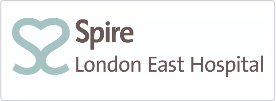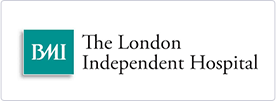
This is a general term which describes the range of situations – acid reflux, with or without oesophagitis and symptoms.
Acid reflux is when some acid leaks up (refluxes) into the oesophagus.
Oesophagitis means inflammation of the lining of the oesophagus. Most cases of oesophagitis are due to reflux of stomach acid which irritates the inside lining of the oesophagus. The lining of the oesophagus can cope with a certain amount of acid. However, it is more sensitive to acid in some people. Therefore, some people develop symptoms with only a small amount of reflux. However, some people have a lot of reflux without developing oesophagitis or symptoms.
The sphincter at the bottom of the oesophagus normally prevents acid reflux. Problems occur if the sphincter does not work very well. This is common, but in most cases it is not known why it does not work so well. In some cases the pressure in the stomach rises higher than the sphincter can withstand. For example, during pregnancy, after a large meal, or when bending forward. If you have a hiatus hernia (when part of the stomach protrudes into the chest through the diaphragm), you have an increased chance of developing reflux.
Heartburn is the main symptom. This is a burning feeling which rises from the upper abdomen or lower chest up towards the neck. (It is confusing as it has nothing to do with the heart!).
Other common symptoms include: pain in the upper abdomen and chest, feeling sick, an acid taste in the mouth, bloating, belching, and a burning pain when you swallow hot drinks. Like heartburn, these symptoms tend to come and go, and tend to be worse after a meal.
Some uncommon symptoms may occur. If any of these symptoms occur it can make the diagnosis difficult as these symptoms can mimic other conditions. For example:
Tests are not usually necessary if you have typical symptoms. Many people are diagnosed with \’presumed acid reflux\’ when they have typical symptoms, and the symptoms are eased by treatment. Tests may be advised if symptoms: are severe, or do not improve with treatment, or are not typical of GORD.
Endoscopy is the common test. This is where a thin, flexible telescope is passed down the oesophagus into the stomach. With oesophagitis, the lower part of the oesophagus looks red and inflamed. However, if it looks normal it does not rule out acid reflux. Some people are very sensitive to small amounts of acid, and can have symptoms with little or no inflammation to see.
A test to check the acidity inside the oesophagus may be done if the diagnosis is not clear.
Other tests such as heart tracings, chest X-ray, etc, may be done to rule out other conditions if the symptoms are not typical.
The following are commonly advised. However, there has been little research to prove how well these \’lifestyle\’ changes help to ease reflux.
Smoking: The chemicals from cigarettes relax the sphincter muscle and make acid reflux more likely. Symptoms may ease if you are a smoker and stop smoking.
Some foods and drinks may make reflux worse in some people. It is thought that some foods may relax the sphincter and allow more acid to reflux. It is difficult to be certain how much foods contribute. Let common sense be your guide. If it seems that a food is causing symptoms, then try avoiding it for a while to see if symptoms improve. Foods and drinks that have been suspected of making symptoms worse in some people include: peppermint, tomatoes, chocolate, spicy foods, hot drinks, coffee, and alcoholic drinks. Also, avoiding large volume meals may help.
Some drugs may make symptoms worse. They may irritate the oesophagus, or relax the sphincter muscle and make acid reflux more likely. The most common culprits are anti-inflammatory painkillers (such as ibuprofen or aspirin). Others include: diazepam, theophylline, nitrates, and calcium channel blockers such as nifedipine. But this is not an exhaustive list. Tell a doctor if you suspect that a drug is causing the symptoms, or making symptoms worse.
Weight: If you are overweight it puts extra pressure on the stomach and encourages acid reflux. Losing some weight may ease the symptoms.
Posture: Lying down or bending forward a lot during the day encourages reflux. Sitting hunched or wearing tight belts may put extra pressure on the stomach which may make any reflux worse.
Bedtime: If symptoms recur most nights, the following may help:
Go to bed with an empty, dry stomach. To do this, don\’t eat in the last three hours before bedtime, and don\’t drink in the last two hours before bedtime.
If you are able, try raising the head of the bed by 10-20 cms (for example, with books or bricks under the bed\’s legs). This helps gravity to keep acid from refluxing into the oesophagus. If you do this do not use additional pillows, because this may increase abdominal pressure.
Antacids:These are alkali liquids or tablets that neutralise the acid. A dose usually gives quick relief. There are many brands which you can buy. You can also get some on prescription. You can use antacids \’as required\’ for mild or infrequent bouts of heartburn.
Acid-suppressing drugs: If you get symptoms frequently then see a doctor. An acid-suppressing drug will usually be advised. Two groups of acid-suppressing drugs are available – proton pump inhibitors (PPIs) and histamine receptor blockers (H2 blockers). They work in different ways but both reduce (suppress) the amount of acid that the stomach makes. Proton pump inhibitors include: omeprazole, lansoprazole, pantoprazole, rabeprazole, and esomeprazole. H2 blockers include: cimetidine, famotidine, nizatidine, and ranitidine.
In general, a proton pump inhibitor is used first as these drugs tend to work better than H2 blockers. A common initial plan is to take a full dose course of a proton pump inhibitor for a month or so. This often settles symptoms down and allows any inflammation in the oesophagus to clear. After this, all that you may need is to go back to antacids \’as required\’ or to take a short course of an acid suppressing drug \’as required\’.
However, some people need long-term daily acid suppressing treatment. Without medication, their symptoms return quickly. Long-term treatment with an acid-suppressing drug is thought to be safe, and side-effects are uncommon. The aim is to take a full dose course for a month or so to settle symptoms. After this, it is common to \’step-down\’ the dose to the lowest dose that prevents symptoms. However, the maximum full dose taken each day is needed by some people.
Surgery:An operation can \’tighten\’ the lower oesophagus to prevent acid leaking up from the stomach. It can be done by \’keyhole\’ surgery. In general, the success of surgery is no better than acid-suppressing medication. However, surgery may be an option for some people whose quality of life remains significantly affected by their condition and where drug treatment is not working well or not wanted long-term.
A hiatus hernia is where part of the stomach pushes up into the lower chest through a defect in the diaphragm.
The cause of hiatus hernia is not clear. It is thought that most develop in people over the age of 50 years. It may be that the diaphragm weakens with age and allows part of the stomach to protrude through the hole in the diaphragm. Factors which increase the pressure in the abdomen, such as regular coughing, weight lifting, or obesity, may increase the risk of developing a hiatus hernia.
Sliding hiatus hernia is the most common type. In this situation, the sphincter at the bottom of the oesophagus and the top of the stomach protrudes through the hole (hiatus) in the diaphragm. The hernia may slide up and down, in and out of the lower chest. It is often quite small.
Rolling hiatus hernia is less common. In this situation, part of the stomach protrudes up through the hole in the diaphragm next to the oesophagus.
No symptoms: Many people with a hiatus hernia have no symptoms.
Acid reflux symptoms: If you have a hiatus hernia, the factors that normally prevent stomach acid from refluxing into the oesophagus may not work so well. The sphincter may not work properly, and the normal pressure of the diaphragm on the oesophagus is lost. Therefore, you are more prone for acid in the stomach to reflux (regurgitate) into your oesophagus.
The refluxed acid can cause inflammation of the lower part of the oesophagus which can cause one or more of the following symptoms:
Heartburn: this is the main symptom. This is a burning feeling which rises from the upper abdomen or lower chest up towards the neck. (It is confusing as it has nothing to do with the heart!)
Other common symptoms include: pain in the upper abdomen and chest, feeling sick, an acid taste in the mouth, bloating, belching, and a burning pain when you swallow hot drinks. Like heartburn, these symptoms tend to come and go, and tend to be worse after a meal.
Some uncommon symptoms may occur. If any of these symptoms occur, it can make the diagnosis difficult, as these symptoms can mimic other conditions. For example:
A persistent cough, particularly at night, sometimes occurs. This is due to the refluxed acid irritating the trachea (windpipe). Asthma symptoms of cough and wheeze can sometimes be due to acid reflux.
Other mouth and throat symptoms sometimes occur such as gum problems, bad breath, sore throat, hoarseness, and a feeling of a lump in the throat.
Severe chest pain develops in some cases (and may be mistaken for a heart attack).
Watch our valued client Isobel Grayson talking about her experience having Laparoscopic Sleeve Gastrectomy by Mr Sanjay Agrawal at The London Obesity Group clinic in London.
 Before
Before After
AfterWatch our valued client Jane Round taking about her experience having Laparoscopic Sleeve Gastrectomy by Mr Sanjay Agrawal at The London Obesity Group clinic in London.
 Before
Before After
AfterPlease provide us with a few information or call us on 07876 618424 and a member of our friendly team will be happy to help with your request.
27 Harley Street, London W1G 9QP
Stepney Green, London E1 4NL
Ilford, Essex IG4 5PZ
Buckhurst Hill, Essex IG9 5HX
Harlow, Hertfordshire CM21 0HH
Brentwood Essex CM15 8EH




